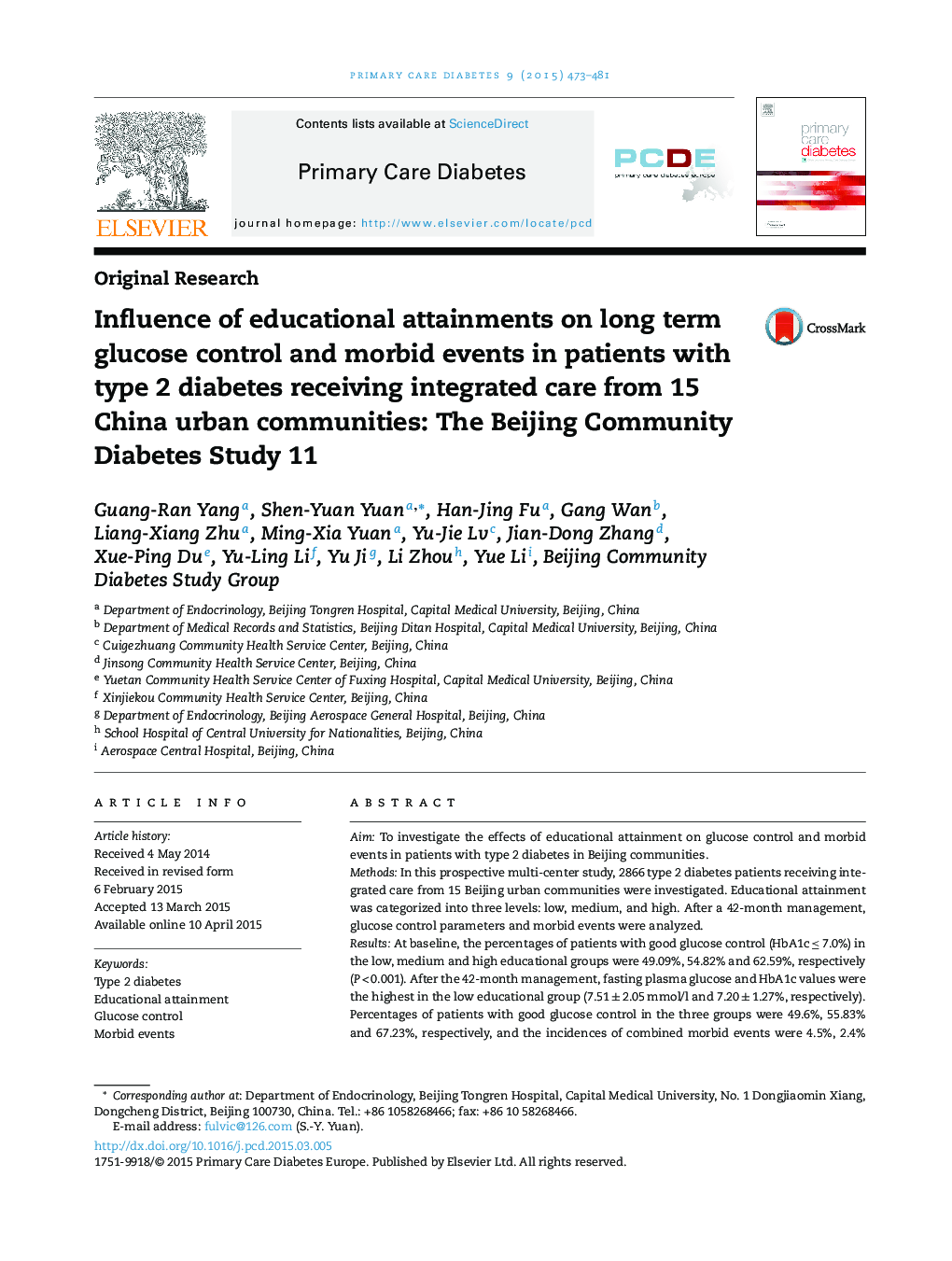| کد مقاله | کد نشریه | سال انتشار | مقاله انگلیسی | نسخه تمام متن |
|---|---|---|---|---|
| 2675437 | 1141788 | 2015 | 9 صفحه PDF | دانلود رایگان |
• The effects of educational level on glucose control and morbid events were studied in patients with T2DM.
• After a 42-month management, more patients with a higher educational level had good glucose control.
• Educational attainment was also related to the incidence of combined morbid events.
• More intensive diabetes management and education may be necessary when treating people with low educational attainment.
AimTo investigate the effects of educational attainment on glucose control and morbid events in patients with type 2 diabetes in Beijing communities.MethodsIn this prospective multi-center study, 2866 type 2 diabetes patients receiving integrated care from 15 Beijing urban communities were investigated. Educational attainment was categorized into three levels: low, medium, and high. After a 42-month management, glucose control parameters and morbid events were analyzed.ResultsAt baseline, the percentages of patients with good glucose control (HbA1c ≤ 7.0%) in the low, medium and high educational groups were 49.09%, 54.82% and 62.59%, respectively (P < 0.001). After the 42-month management, fasting plasma glucose and HbA1c values were the highest in the low educational group (7.51 ± 2.05 mmol/l and 7.20 ± 1.27%, respectively). Percentages of patients with good glucose control in the three groups were 49.6%, 55.83% and 67.23%, respectively, and the incidences of combined morbid events were 4.5%, 2.4% and 1.5%, respectively. Cox regression analysis showed that educational level was related to the incidence of combined morbid events (medium level, HR = 0.572; high level, HR = 0.351; P < 0.05).ConclusionsEducational level was associated with long-term glucose control, and seemed to be related to the incidence of combined morbid events in people with type 2 diabetes.
Journal: Primary Care Diabetes - Volume 9, Issue 6, December 2015, Pages 473–481
